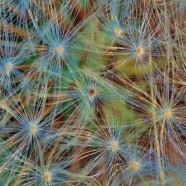
Learn about the best foods and plants to kill off cancer cells while providing cancer and disease protection. Also view at the end why Chemotherapy is not able to cure cancer.
Natural restorative herbal remedies are beginning to see proper recognition for their place at the forefront of healthful supplements. Many of these plants and extracts show the complex and integrated ways in which an herbal remedy can work. Their valuable components continue to demonstrate new and effective applications, including anti-inflammatory, anti-oxidative, and anti-asthmatic properties. Some of these properties include flavonoids, alkaloids, saponins, anthraquinones, and terpenoids. These properties and more, when utilized properly, have numerous pharmacological uses.
Because Inflammation spreads cancer throughout the body, look to foods, and plants noted for their anti-inflammatory effects. There are numerous medicinal plants and properties in foods extolling their anti-cancer and anti-inflammatory effects while providing protection from the same. Below you will find some of my favorites.
Try to incorporate these into your daily diets or take certain ones in supplement form to be sure you are now propping up your immune system and boosting your nutrient base as well. When our body’s lack too many essential nutrients from poor or inadequate diets, our immune and endocrine systems function significantly lower than normal. This makes us vulnerable to diseases like cancer and many other aliments supported by a lack of nutrients deemed necessary for proper body function and repair.
-
- Thyroid Cancer: In my newly released book ‘Reverse Thyroid Disease Naturally’ you can view one of my case histories for their removal of thyroid cancer – with the whole protocol included. You will also learn how iodine alone eliminated breast cancer and fibrocystic disease.
- To learn much more on how to lower inflammation throughout your body (inflammation spreads cancer throughout the body) pick up my book ‘Reverse Inflammation Naturally’. In that book you will also learn exactly how cancer forms starting with a single cell onto a full tumor.
Herbs and Foods – Anti-cancer and Anti-inflammatory
Ginger
Ginger has been used medicinally long before science developed an interest in its ability to treat inflammation and gastric problems. It contains as many as 500 different properties, only a few of which have been scientifically studied. Because ginger has strong antibacterial properties, it can help prevent colds and flu as well as treat their symptoms.
New research has also revealed that ginger is such a powerful anti-cancer medicine that it can kill 10,000 times as many cancer cells as chemotherapy when incorporated into your diet. My personal preference is grated fresh ginger root (of a mushy consistency) mixed with boiling water and raw honey. I also use it abundantly when cooking any Asian or Indian recipes, as well in soups and salad dressings and dishes comprised of a mixture of grains, legumes, and rice.
Falcarinol
Falcarinol is a natural pesticide and plant antioxidant which imparts its same benefits to people who consume the foods it’s contained in. Carrots are especially high in this protective nutrient, which shows ten times the ability to inhibit cancer cells compared to beta-carotene. Juice or cook carrots whole to retain this element.
*Carrot juice/beet/greens has been a mainstay of my diet for more than 35 years. Beets are excellent for liver health among other supportive nutrients. Dandelion is my green of choice.
Lycopene
Lycopene is one of the most respected members of the carotenoid family—and also one of the most beneficial. Lycopene possesses the capability to eliminate singlet oxygen radicals, one of the most damaging of all free radicals. Oxygen singlet radicals are highly reactive byproducts of oxidation, formed during the metabolism of polyunsaturated fatty acids and has shown to be extremely damaging to healthy cells.
Red in color, lycopene is found in such foods as tomatoes, pink grapefruit, watermelon and papaya.
Curcumin
Turmeric, the yellow pigment popularly known as the main ingredient in Asian curry cuisine, is currently being heavily researched to ascertain the positive properties of its prime component, curcumin. Curcumin has been found to possess profound anti-inflammatory properties; the one remaining issue involves curcumin’s poor rate of absorption and the rate at which the body purges it from its system. Look for the best absorption products when purchasing curcumin supplements.
Tulsi Tea
Tulsi Tea (also called Holy Basil) is another tea with significant levels of anti-inflammatory antioxidants that reduce the painful and dangerous inflammation associated with various forms of arthritis, cancer, and degenerative neurological disorders. Like other highly prized medicinal plants, Tulsi supports and strengthens many prominent areas of the body, such as modulating the immune system, providing lung and bronchial support, and offering heart and vascular protection, as well as significant antioxidant and free radical scavenging abilities.
Resveratrol
The polyphenolic phytochemical resveratrol, found in grapes and berries, has earned a reputation as a potent protective agent against inflammatory cytokines and free radicals. These protective chemicals also elevate glutathione in the body and further the formation of antioxidant enzymes.
Sulphur Phyto-Nutrients
Sulphorane, indoles, isothiocyanates, and alpha lipoic acid (mentioned earlier) are all sulphur phyto-nutrients found in such vegetables as asparagus, broccoli, cauliflower, mustard greens and onions. Studies show that sulforaphane stimulates antioxidant enzymes NFE2L2 or Nrf-2 (nuclear factor erythroid-derived 2), which regulates the expression of protective antioxidant proteins against oxidative damage brought on by inflammation and injury.
Phytochemicals (like glucosinolates) found in cruciferous vegetables are enzymatically converted into sulforaphane and other chemical constituents, which research has revealed to work at a much deeper level of the body. These compounds actually influence our genes to increase the production of alkaline defense mechanisms involved in the detoxification process.
Epigallocatechin-3-gallate (EGCG)
EGCG is a type of catechin, which is most abundantly found in green tea (7380 mg per 100 grams), white tea (4245 mg per 100 grams), and (in smaller amounts) in black tea. For the most part, these catechins are converted to thearubigins and theaflavins. Smaller amounts can be found in plums, apple skin, pecans, hazelnuts and carob.
Vitamin A
To enhance healing due to injury or from too much strenuous exercise, the recommended dosage of vitamin A would be 10,000 IU daily for 1–2 weeks derived from fish oils. A few areas requiring vitamin A support include your immune system, vision, reproductive systems, bone growth, tooth development and proper functioning of our heart, lungs and kidneys.
Vitamin D (Fat Soluble)
When the body becomes deficient in vitamin D, it is virtually impossible for proper absorption of calcium. Fat soluble vitamin D can be found naturally in fish oil, and is best absorbed with a meal that contains some form of fat—preferably a good fat source. Milk is another source of fat soluble vitamin D, as long as most of the fat has not been removed. But if you have challenges in getting enough vitamin D, sunshine is still the most reliable source.
Good sources for fat soluble vitamin D can be found in the following foods.
- Fish liver oils (wild salmon and cod liver oils), fatty fish (salmon, mackerel, halibut, sardines, and herring
- Egg yolks
- Fortified milk, orange juice and cereals
- Dried shiitake mushrooms
Essential Fatty Acids (EFAs)
The word “essential” has never had more important meaning. Without these fats in their proper proportion, it would not be possible to remain well—let alone pain-free—throughout one’s lifetime. Huge strides have been made in science showing us the necessity for adequate amounts of EFAs for disease prevention and for fully functioning body systems.
Of these, omega 3s are the ones most sought after by the body (typically found in fish and seed oils), especially since our diets have been traditionally high in the omega 6 fatty acids found in vegetable and grain cooking oils. (As stated earlier, the proper ratio for optimum balance in the body of omega 6 fatty acids compared to omega 3 fatty acids is a 1:1 ratio, whereas most people maintain a 20:1 or even 30:1 ratio).
Beta-carotene
Beta-carotene and alpha-carotene are water soluble vitamins found in yellow and orange fruits and vegetables, but as these can merge with other phyto-nutrients, they may also be found in red and pink foods. Alpha-carotene is classified as pro-vitamin A, which means it can be converted into the active form of vitamin A known as retinol. Similarly, beta-carotene can also be converted into vitamin A.
Thanks to their positive effect neutralizing free radicals in the body, clinical evidence and research studies supports the addition of carotenoids to help prevent abnormal cellular growth and activity involved in aliments such as cancer, cardiovascular health, vision, memory, dementia and diabetes.
Food sources include: carrots, squash, pumpkin, peppers, tomatoes, oranges, lemons, mangos, papaya and sweet potatoes. Certain green vegetables also have high amounts of carotenoids, such as kale, spinach, collard greens, thyme and cilantro.
Astaxanthin
Found in many aquatic species, astaxanthin is a red carotenoid (fat-soluble) which is gaining notoriety for its enhanced ability to protect the nervous system, brain and eyes.
Astaxanthin is also gaining popularity due to the unique characteristic that, when recycling free radical electrons, astaxanthin does not become ineffective after eliminating these extra electrons, like other antioxidants. It then follows that astaxanthin is one of the most powerful carotenoids in the unique way it protects plants, animals and sea life.
Astaxanthin protects the body from cellular damage associated with high oxidative foods and reduces inflammation in body tissues and joints. Being fat soluble, coupling astaxanthin with fish oil has been shown to work effectively.
Sulphur Phyto-Nutrients
Sulphorane, indoles, isothiocyanates, and alpha lipoic acid (mentioned earlier) are all sulphur phyto-nutrients found in such vegetables as asparagus, broccoli, cauliflower, mustard greens and onions. Studies show that sulforaphane stimulates antioxidant enzymes NFE2L2 or Nrf-2 (nuclear factor erythroid-derived 2), which regulates the expression of protective antioxidant proteins against oxidative damage brought on by inflammation and injury.
Phytochemicals (like glucosinolates) found in cruciferous vegetables are enzymatically converted into sulforaphane and other chemical constituents, which research has revealed to work at a much deeper level of the body. These compounds actually influence our genes to increase the production of alkaline defense mechanisms involved in the detoxification process.
Antioxidants
In nature, antioxidants are the pigments in plants that give them their intense and brilliant colors. But more importantly, antioxidants are a major part of our body’s defense team, and come in many different categories. Even though mankind has been consuming these nutrients for thousands of years, only recently have comprehensive studies taken place to understand the complex role they play. By incorporating foods rich in antioxidant qualities, dangerous free radicals will be neutralized, preventing degenerative diseases, while also providing protection against infections and repairing damaged genes – very important to ward off cancer cells and in destroying them!
The above mentioned are all stars in killing cancer stem cells at the root cause of cancer tumors however realize there are many more – far exceeding this short list.
A main benefit as well is eating more raw foods and juices. This ensures you of an abundance of antioxidants and cancer fighting nutrients. And if you find your diet to be less than optimum, be sure to include appropriate supplements to pick up dietary shortages.
Include the following nutrients:
Iodine drops more than once per day on the tongue or in liquids, fish oils or super EFA’s twice per day, and daily of magnesium, zinc, B vitamins, L-Tyrosine, vitamin D3, (these may be required more than once per day to restore levels when not consumed or for symptom s created from nutrient imbalances; for instance, L- Tyrosine is necessary for making dopamine and is also the body’s main energy component. For better moods and energy take 500mg 3 times per day. Also lower omega 6 based cooking oils like canola, sunflower, vegetable, soybean and corn – these are highly toxic and directly fuel inflammation pathways in our bodies.
Cook with extra virgin olive oil and coconut oils and use cold pressed oils on salads, in healthy drinks like freshly made juice or smoothies and on already prepared foods. Do not heat cold pressed oils. Lastly strive for more variety of fruits and vegetables in your diet while lowering bad habits that are heavily toxin laden such as smoking or too much alcohol, and high sugar and chemical drinks and foods.
Why Cancer Treatments can be Ineffectual
Chemotherapy and radiotherapy has failed to produce noteworthy cancer survival rates mainly due to cancer stem cells being resistant to these methods. Other major problems are their impact on the body as a whole significantly lowering major functions and our immune system and so on.
“The cancer stem cell model suggests that tumor initiation is governed by a small subset of distinct cells with stem-like character termed cancer stem cells (CSCs). CSCs possess properties of self-renewal and intrinsic survival mechanisms that contribute to resistance of tumors to most chemotherapeutic drugs. The failure to eradicate CSCs during the course of therapy is postulated to be the driving force for tumor recurrence and metastasis. Recent studies have focused on understanding the unique phenotypic properties of CSCs from various tumor types, as well as the signaling pathways that underlie self-renewal and drug resistance.”
At present-day, cancer therapies have not been able to produce a single drug with the ability to target the cancer stem cell within a tumor, all which was confirmed by the above study and the following evaluation:
“If indeed the CSC response is a vital criterion for cancer treatment evaluation, there are still no drugs in clinical use that specifically target CSCs.”
Copyright © 2018 – All Rights Reserved – Michelle Honda Ph.D.
Announcement
Look for my new forthcoming books “Reverse Heart Disease Naturally” (Jan.31, 2017) “Reverse Inflammation Naturally” (May 31, 2017) “Reverse Thyroid Diseases Naturally” (June 2018) and “Reverse Alzheimers/Dementia Naturally” (Nov.2018)
Where to Purchase:
Reverse Gut Diseases Naturally
Reverse Heart Disease Naturally
Reverse Inflammation Naturally
Reverse Thyroid Disease Naturally June 28/2018
Inflammation Natural Solutions Book by Michelle Honda PhD Holistic Doctor
Hatherleigh Press Page Buy Book RGDN
Local Book Stores in US and Canada
Disclaimer
While close attention was given to the accuracy of information in this article, the author accepts neither responsibility nor liability to any person with respect to injury, damage, loss or any circumstances involving alleged causes directly or indirectly related to the information in this article. The sole purpose is to educate and broaden ones awareness. This information is not meant to replace medical advice or services provided by a health care professional.





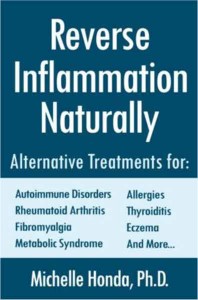
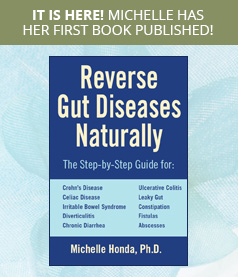

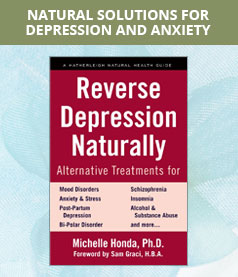
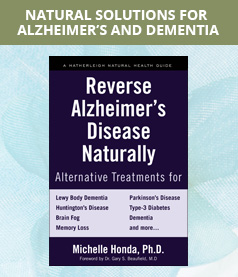
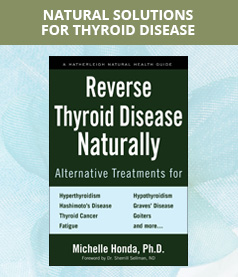

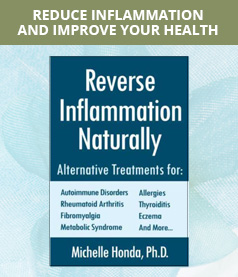
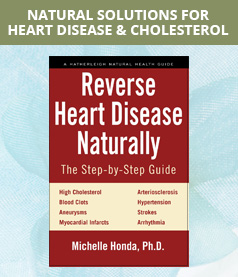
Follow Us!